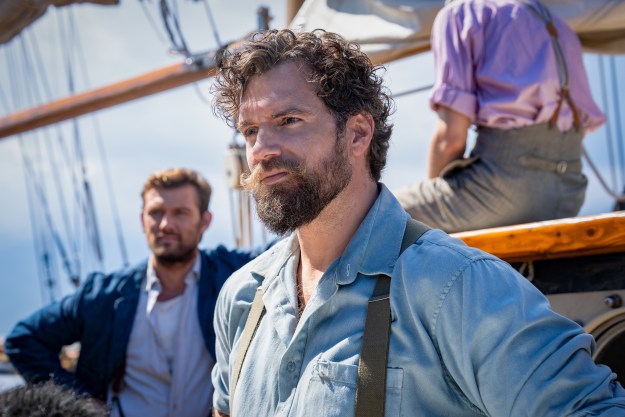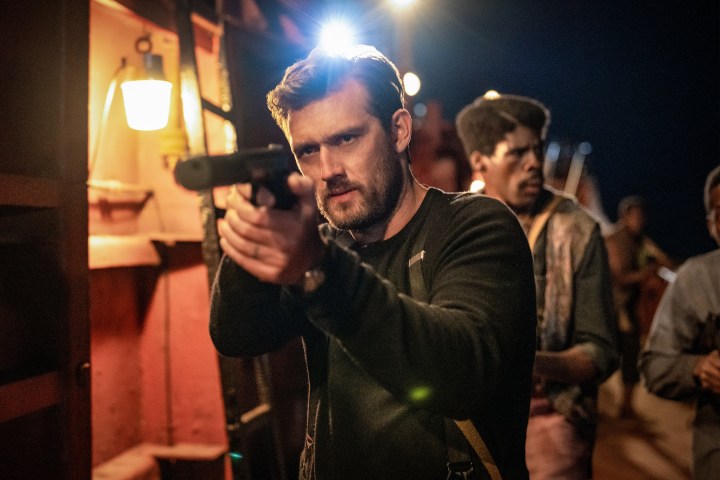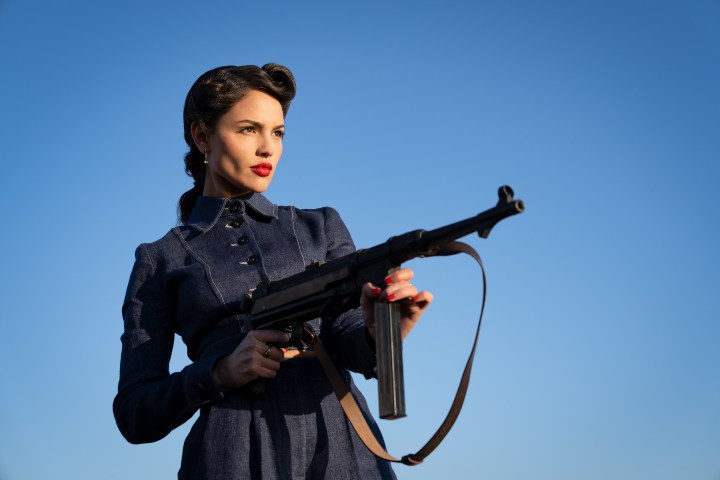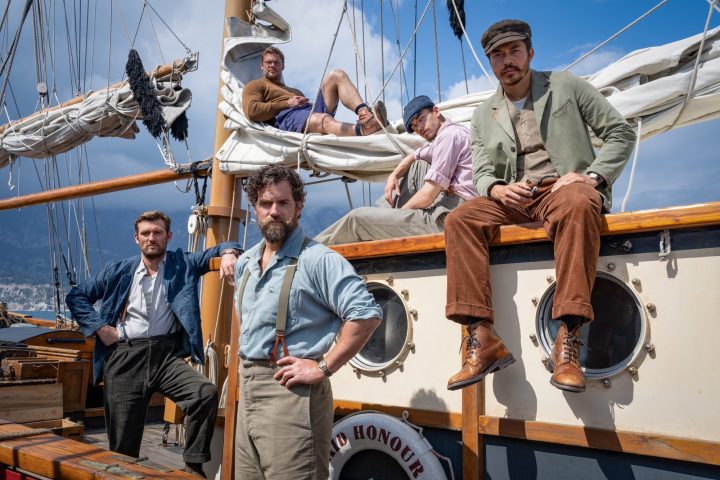
“Guy Ritchie's latest is a slight, but immensely fun WWII thriller starring Henry Cavill.”
- A charming and likable cast
- A winning sense of humor
- A refreshingly brisk pace from start to finish
- Multiple one-dimensional characters
- A few rushed action sequences
- A surprising lack of tension throughout
The Ministry of Ungentlemanly Warfare is a Guy Ritchie movie through and through. After bursting onto the U.K. film scene in the late ’90s with rough-and-ready, rowdy crime titles like Lock, Stock, and Two Smoking Barrels and Snatch, Ritchie has spent the past decade transitioning into a more journeyman-type director. That is to say that his most recent films, including The Gentlemen, Wrath of Man, Operation Fortune: Ruse de Guerre, and The Covenant, have all lacked the verve and scrappy personality that once defined his work, but have, at the same time, been competently made and pleasingly watchable.
Once upon a time, a wide array of directors could have made those movies. Nowadays, however, the number of filmmakers working in Hollywood who possess Ritchie’s kind of old-fashioned, tried-and-true skill set is depressingly small. Few current midlevel directors know how to direct action movies that breathe and move as well as his do, and even fewer know how to make it look as easy as he does. That’s certainly true of The Ministry of Ungentlemanly Warfare, a World War II-set action comedy that doesn’t push itself as far as it could,but does rise to meet its own, modest expectations without breaking a sweat.

The Ministry of Ungentlemanly Warfare‘s approach to its plot is laid out in its first scene, which follows a Nazi naval officer as he boards a fishing boat seemingly occupied only by two men, Anders Lassen (Reacher‘s Alan Ritchson) and Gus March-Phillipps (Henry Cavill), who claim that they’re simply two longtime friends on vacation. When the Nazi officer tries to intimidate them, they laugh in his face, and it’s only a few seconds later that they’re easily and violently dispatching with him and all of his German soldiers on board. The scene succinctly sets up what is to come in The Ministry of Ungentlemanly Warfare, a thriller that isn’t so much interested in challenging its characters as it is in demonstrating time and again just how good they are at their jobs.
It would be a better film if it did both, but there’s pleasure still to be found in watching its unlikely heroes expertly attempt to cripple Nazi Germany’s hold over European waters in the early 1940s by destroying a vessel carrying a large load of U-boat supplies. In order to do so, Gus and his team have to infiltrate a German-controlled port in North Africa without being noticed. It’s a mission that’s far easier said than done, which is why Cavill’s Gus recruits Anders, Freddy Alvarez (Henry Golding), Henry Hayes (Hero Fiennes Tiffin), and Geoffrey Appleyard (Alex Pettyfer) to help him do it. The team also has the support of Marjorie Stewart (Eiza González) and Mr. Heron (Babs Olusanmokun), a pair of undercover agents working on the ground in North Africa, as well as Brigadier Gubbins (Cary Elwes), a high-ranking British official working directly under Winston Churchill (a committed but unconvincing Rory Kinnear).
Based on a true story that was only recently declassified, The Ministry of Ungentlemanly Warfare wisely gets all the details about its characters and their primary mission out of the way within its first 10 minutes. This act of supreme efficiency, which comes courtesy of James Herbert’s concise editing and the film’s script (penned by Paul Tamasy, Eric Johnson, Arash Amel, and Ritchie), allows the midsized blockbuster to dedicate the majority of its 120-minute runtime to its characters’ active efforts to pull off the most dangerous assignment of their lives. In striving to make its characters seem as cool and capable as possible at all times, the movie doesn’t always convince you that the challenges they face are as dangerous as they’re made out to be. It, nonetheless, moves through its plot at a consistent, quick pace that doesn’t just reflect, but reinforces its protagonists’ unwavering confidence.

The film refrains from developing most of its characters beyond their initial, skills-oriented descriptions. González’s Marjorie is allowed the most depth, as her attempts to con a local Nazi overseer (Til Schweiger) give The Ministry of Ungentlemanly Warfare the chance to explore her perspective as a Jewish woman on both the war and her role in it. At times, the flatness of the movie’s other characters is noticeable — namely, when we’re expected to believe in the supposed depth of an instantaneous friendship between Gus and Kambili Kalu (Danny Sapani), a well-connected crime kingpin who agrees to help him and his team tackle their mission. Most of the time, though, the film coasts along on the charm of its performers, specifically Cavill and Ritchson, who bring a similarly pitched, much-appreciated edge of wildman energy to their characters.
Thankfully, the film they’re in has enough of a sense of fun to similarly make up for many of its shortcomings. The movie has the tendency to rush its action sequences and let its heroes move through them without meeting any kind of formidable resistance, but Ritchie’s ability to visually communicate geography and scale remains the glue that holds all of his work together. At no point is the viewer ever left confused spatially, chronologically, or narratively by what’s happening on-screen, and that constant level of directorial control keeps The Ministry of Ungentlemanly Warfare from ever spiraling into empty-calorie nonsense. The further into his career he’s gotten, the more Ritchie has refined his unique style of muscular, yet economical filmmaking, and that’s particularly clear here.

All in all, The Ministry of Ungentlemanly Warfare fits in well alongside Ritchie’s past few films. It’s lighter than it arguably should have been, but not so weightless that it completely evaporates in its makers’ grasp. Contrary to what its title may promise, the film could have stood to get its hands dirtier and more fully embrace the darkness lurking beneath its story. Sometimes, though, all a movie really needs to do to work is get you on the same rhythm as it. The Ministry of Ungentlemanly Warfare not only does that, but it also carries itself with enough style and enthusiasm to win you over to its side.
The Ministry of Ungentlemanly Warfare is now playing in theaters.



